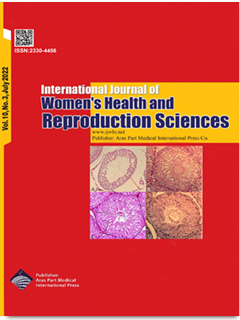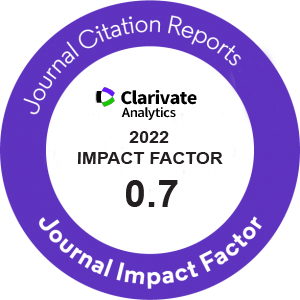
| Review | |
| Murine Models of Endometriosis: A Systematic Review | |
| Hayedeh Hoorsan1, Masoumeh Simbar2, Fahimeh Ramezani Tehrani3, Fardin Fathi4, Nariman Mosaffa5, Hedyeh Riazi6, Omid Banafshi4 | |
| 1Student Research Committee, School of Nursing and Midwifery, Shahid Beheshti University of Medical Sciences, Tehran, Iran 2Midwifery and Reproductive Health Research Center, Department of Midwifery and Reproductive Health, School of Nursing and Midwifery, Shahid Beheshti University of Medical Sciences, Tehran, Iran 3Reproductive Endocrinology Research Center, Research Institute for Endocrine Sciences, Shahid Beheshti University of Medical Sciences, Tehran, Iran 4Cellular and Molecular Research Center, Research Institute for Health Development, Kurdistan University of Medical Sciences, Sanandaj, Iran 5Department of Immunology, School of Medicine, Shahid Beheshti University of Medical Sciences, Tehran, Iran 6Department of Midwifery & Reproductive Health, School of Nursing & Midwifery, Shahid Beheshti University of Medical Sciences, Tehran, Iran |
|
|
IJWHR 2022; 10: 121-134 DOI: 10.15296/ijwhr.2022.23 Viewed : 1811 times Downloaded : 1933 times. Keywords : Endometriosis, Animal models, Homologous transplantation, Heterologous transplantation |
|
| Full Text(PDF) | Related Articles | |
| Abstract | |
Objectives: This review inspects the usage of animal models and the practical solutions of this method for different challenges of endometriosis. The objectives of the study are to determine and compare the histopathology, biomarkers, and development of endometrial lesions in murine homologous and heterologous endometriosis models. Methods: The literature search was performed on PubMed, Scopus, Web Cochrane, and EMBASE from January 1990 to January 2019. Experimental articles in which the establishment of the endometriosis model had been proven through the examination of size, weight, number of implants, adhesion, histologic score, and altered biomarker were eligible for inclusion. Results: Based on type of induction, articles were categorized into two groups: heterologous-induced method (n=5) and autologous-induced method (n=13). In general, in case of establishing the heterologous induction method is less reliable than the autologous induction method. Conclusions: Using human endometrial tissues for endometrial inductions is possible in heterologous models under immunosuppression, which is more suitable for therapeutic studies, but time limitation considerations are mandatory for this type of model. Homologous endometriosis inductions cause larger endometrial lesions, biomarkers, and reproduction rate changes similar to those occurring in humans. Similarities make this method more appropriate for pathogenesis and genetic studies and also observe the impact of endometriosis on the next generation. Choosing an appropriate model for the induction of endometriosis is dependent on the purpose of each study. |
Cite By, Google Scholar
Google Scholar
PubMed
Online Submission System
 IJWHR ENDNOTE ® Style
IJWHR ENDNOTE ® Style
 Tutorials
Tutorials
 Publication Charge
Women's Reproductive Health Research Center
About Journal
Publication Charge
Women's Reproductive Health Research Center
About Journal
Aras Part Medical International Press Editor-in-Chief
Arash Khaki
Mertihan Kurdoglu Deputy Editor
Zafer Akan






















